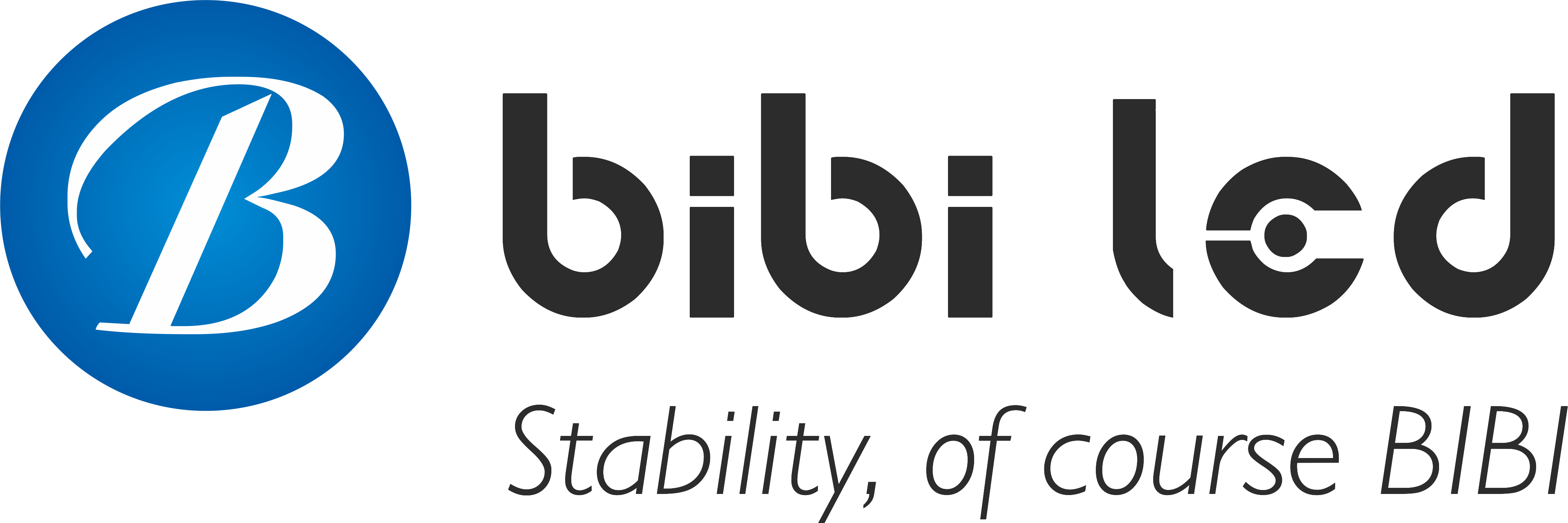Introduction
Sur le marché actuel, il existe de nombreuses variétés de Écrans LED, et de nombreuses entreprises ont progressivement sombré dans l'idée fausse selon laquelle « plus c'est grand, mieux c'est ». Alors, l'écran LED de porte est-il vraiment plus grand, mieux c'est ?
Table des matières
1. D'où vient l'intuition « plus c'est grand, mieux c'est » ?
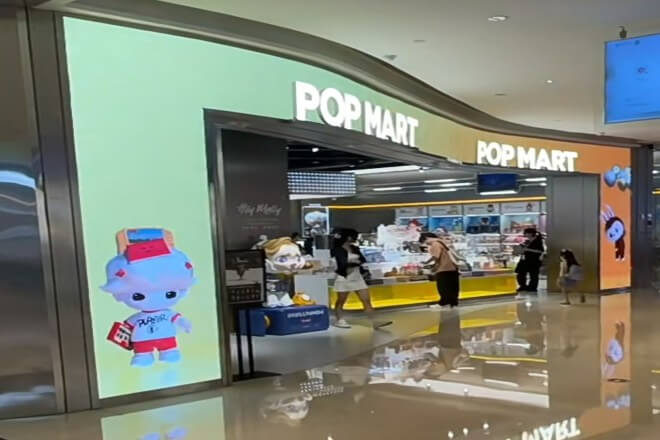
Lors de l’achat d’écrans LED, de nombreuses personnes pensent instinctivement que « bien sûr, plus l’écran est grand, mieux c’est ».
Comme si plus la taille était grande, plus l'effet était choquant et plus elle pouvait attirer l'attention. Derrière cette intuition se cachent en réalité plusieurs formes d'inertie de la pensée.
1). Le présupposé psychologique « grand écran = attractivité »
Dans les expériences quotidiennes telles que la publicité, les cinémas et étapes, Les gens ont depuis longtemps l’habitude d’associer « grande taille » à « fort impact visuel ».
Dans cette cognition, le grand écran semble automatiquement avoir un sens de « haut de gamme », même s'il n'est pas allumé, il peut supporter une scène.
Cette projection psychologique permet aux gens d’ignorer facilement que la clé réside dans l’adéquation entre la présentation du contenu et l’environnement.
2). La comparaison aveugle des commerçants conduit à une « involution de l'écran ».
Surtout dans les blocs commerciaux et exposition Dans les salles de spectacle, les écrans sont de plus en plus grands, ce qui crée une concurrence invisible. Certaines entreprises ne se basent pas sur des besoins de communication.
Ils sont plutôt anxieux à l’idée de se disputer la zone parce qu’ils veulent « l’avoir si d’autres l’ont » et « l’avoir si d’autres l’ont à cinq mètres, et à six mètres si d’autres l’ont ».
Ce type d’« écran déroulant vers l’intérieur » entraîne souvent une sensation accrue d’oppression spatiale et un sentiment de distance par rapport au public, ce qui affecte à son tour l’expérience interactive.
3). L’effet réel est-il vraiment meilleur ?
Plus l'écran est grand, meilleure est la visibilité, mais cela ne signifie pas que l'effet de communication sera définitivement meilleur.
Par exemple, dans une vitrine ou un magasin avec un espace limité, si le grand écran a une image brouillonne, un faible taux de rafraîchissement et une luminosité inégale, il est facile de provoquer une congestion des informations ou une « pollution lumineuse ».
La conception du contenu, la distance de visualisation, la lumière ambiante et d’autres facteurs sont les critères fondamentaux pour déterminer si un écran est « bon ou non ».
2. Problèmes possibles causés par des écrans LED trop grands
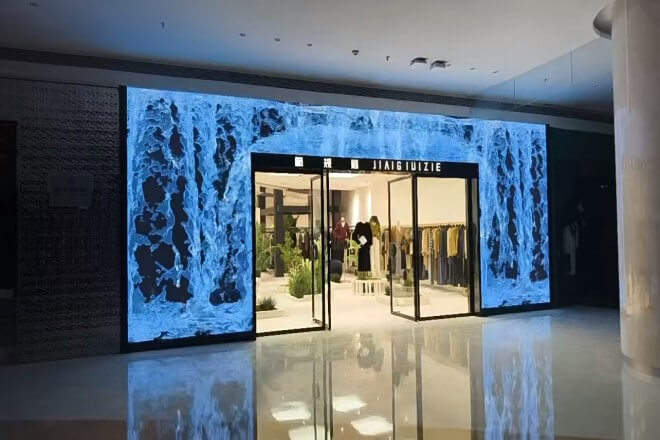
« Plus l’écran est grand, mieux c’est », est la première réaction de nombreuses personnes, mais en fait, un écran LED trop grand pour être approprié peut causer beaucoup plus de problèmes que vous ne le pensez.
1). Espace d'installation insuffisant, l'installation forcée est très déprimante
L'espace devant de nombreux magasins est en réalité assez limité. Si vous insistez pour installer un grand écran LED,…
Vous devrez peut-être retirer les décorations à côté du panneau, voire même le faire dépasser vers l'extérieur.
De cette façon, non seulement cela paraît abrupt, mais cela peut également affecter la beauté générale de la vitrine.
Sans parler de certains vieux quartiers, les murs eux-mêmes ne peuvent pas être modifiés à la légère, et l'installation forcée d'un grand écran peut enfreindre les réglementations en vigueur.
Certains ont installé un grand écran, mais les passants pensent que l’écran est trop « dramatique » et que toute la devanture du magasin est étouffée.
2) Détruire la beauté originelle du bâtiment et la reconnaissance du signe
Certains magasins accordent initialement une attention particulière au sens du design et le style de l'enseigne est très unique.
Un écran surdimensionné bloque directement le logo de la marque ou les détails architecturaux, ce qui rend difficile pour les gens de voir ce que fait le magasin.
Surtout dans les rues commerçantes, si tout le monde utilise un grand écran pour se disputer une zone, tout le monde veut attirer l'attention.
Mais les yeux de tout le monde sont volés par le contenu de l'écran, et le magasin lui-même n'a aucune caractéristique.
Par exemple, un petit café a installé un grand écran à la porte, faisant défiler chaque jour diverses publicités.
De nombreux clients étaient effrayés en entrant dans le magasin, pensant qu'il vendait des produits électroniques, et l'atmosphère est immédiatement devenue très gênante.
3). Le distance de visualisation est faux, mais le contenu n'est pas clairement visible
L'écran LED est-il clair lorsqu'il est grand ? Pas forcément ! Si le pas de masque n'est pas bien choisi, le public sera trop proche de l'écran, le grain sera très prononcé et l'image sera floue.
Par exemple, dans une rue à fort trafic, la plupart des gens se trouvent à seulement trois ou quatre mètres de l’écran.
Si l'écran est trop grand et que le pas des points est grand, il n'est pas clair de voir les petits caractères et les codes QR.
Après avoir acheté un grand écran, personne n’est prêt à s’arrêter et à regarder attentivement, ce qui gaspille l’investissement.
4). Les coûts et la consommation d'énergie augmentent
Plus la surface est grande, plus le coût sera élevé. N'oubliez pas que les coûts d'installation, de transport et d'entretien ultérieur augmenteront également.
Il y a aussi les factures d'électricité. Imaginez : si un immense écran couleur est allumé tous les jours, la consommation d'énergie sera-t-elle alarmante ?
Pour de nombreuses petites entreprises, un petit écran suffit pour une promotion de base. Investir beaucoup d'argent dans un grand écran est en réalité assez faible en termes de ratio entrées-sorties.
3. Critères de jugement corrects : la correspondance est la clé
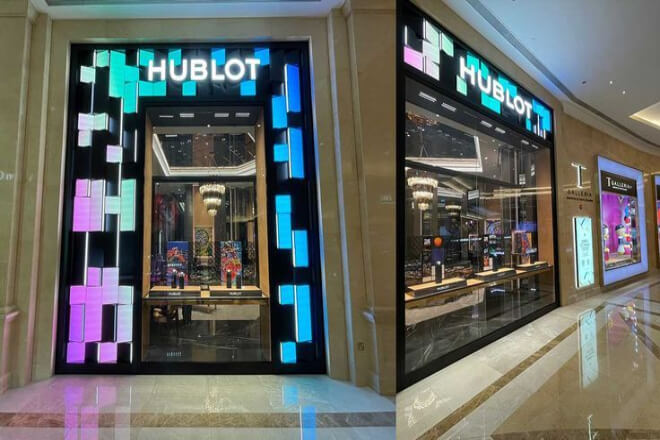
Lors du choix d'un écran LED, le plus important n'est pas de rechercher aveuglément la taille, mais de « l'adapter à vos besoins » et de trouver la taille et les paramètres les plus adaptés en fonction de la situation réelle pour maximiser la valeur de l'écran.
1) La largeur et la proportion visuelle de la tête de porte doivent être coordonnées
La taille de l'écran doit d'abord être adaptée à la largeur totale du linteau de porte. Un écran trop petit sera inesthétique ; un écran trop grand prendra trop de place et paraîtra irrégulier.
Un écran aux proportions raisonnables confère non seulement à la porte une aura plus élégante, mais guide également naturellement la ligne de vue, permettant aux gens de se souvenir de la marque en un coup d'œil.
Tout comme les vêtements, ils ne sont beaux que s'ils sont bien ajustés, et il en va de même pour l'écran.
2) La distance moyenne de visionnement du public est la référence clé
La taille de l'écran doit être déterminée en fonction de la position générale du public. Si les passants se trouvent généralement à 5 mètres, l'espacement peut être légèrement plus grand.
S'il y a une rue piétonne à proximité et que les passants sont proches de l'écran, il faut choisir un écran avec un espacement plus fin et une taille modérée.
Si un écran trop grand est placé dans un endroit où les gens sont proches, les détails ne peuvent pas être vus clairement.
Si un écran trop petit est placé loin, le contenu ne peut pas être vu clairement et ne peut pas jouer de rôle.
3) La complexité du contenu détermine les exigences techniques
Vous souhaitez lire des images statiques simples, des images dynamiques complexes, des vidéos ou même du contenu interactif ?
Plus le contenu est complexe, plus les exigences en matière de résolution d'écran et de taux de rafraîchissement sont élevées, ce qui affectera également le choix de la taille.
Un contenu simple peut entraîner des coûts importants sur un grand écran, tandis qu'un contenu complexe peut nécessiter un écran de spécifications plus élevées pour être affiché clairement.
4) L'intensité lumineuse ambiante ne peut être ignorée
Dans les endroits très éclairés en journée, l'écran a besoin d'une luminosité et d'un contraste plus élevés. Quelle que soit sa taille, il sera inutile sans luminosité.
Dans les endroits sombres la nuit, l'écran est trop lumineux et éblouissant, donc le luminosité doit être ajusté de manière appropriée.
En bref, la lumière ambiante affecte l’expérience visuelle et les facteurs de lumière doivent être pris en compte lors du choix d’un écran.
4. La présentation du contenu est plus importante que la taille de l'écran LED

Lorsque de nombreuses personnes achètent des écrans LED, elles regardent souvent la taille de l’écran au premier coup d’œil.
On pense que plus la taille est grande, plus elle est imposante, mais en fait, ce qui attire vraiment l'attention des gens, c'est le contenu lui-même diffusé sur l'écran.
Quelle que soit la taille de l'écran, si le contenu ne comporte pas de points forts, l'effet sera considérablement réduit.
1). Contraste élevé et haute luminosité sont souvent plus attrayants
La luminosité et le contraste déterminent la « présence » de l'image, même si l'écran n'est pas particulièrement grand.
Tant que la couleur est vive et que la luminosité est appropriée, elle peut se démarquer parmi de nombreuses distractions visuelles.
Surtout pendant la journée ou dans un environnement lumineux complexe, une luminosité élevée peut garantir que l'image est claire et visible, et qu'elle ne sera pas « noyée » par une forte lumière.
De plus, un contraste élevé rend la superposition des images plus distincte et le texte plus accrocheur, ce qui est très important pour transmettre des informations.
Par exemple, si les gros mots sur le panneau d'affichage sont flous et que la couleur est grise, les passants peuvent les ignorer d'un seul coup d'œil, mais si des blocs de couleurs vives sont utilisés avec un design de surbrillance, les informations peuvent être capturées immédiatement.
2). Optimisation du rythme d'animation et de la densité d'information
Le rythme de lecture du contenu a un impact considérable sur l'expérience du public. Si l'animation change trop rapidement,
Cela éblouira les gens et ils n’auront pas le temps de finir de lire le contenu ; au contraire, s’il est trop lent, il est facile de perdre intérêt.
La densité de l'information doit également être correctement contrôlée. Trop d'informations accumulées à l'écran peuvent déconcentrer les spectateurs.
L’approche raisonnable consiste à utiliser une mise en page de contenu bien structurée, à mettre en évidence les informations essentielles et à les compléter avec des effets d’animation appropriés, qui peuvent attirer l’œil sans provoquer de fatigue visuelle.
Par exemple, le contenu de l'écran LED d'un magasin de téléphonie mobile peut d'abord mettre en évidence le modèle principal avec une grande image.
Utilisez ensuite un texte concis pour présenter les principaux arguments de vente, avec des animations de commutation lente, donnant aux gens suffisamment de temps pour comprendre.
3). Le ton de la marque et le style de conception sont cohérents
Le contenu de l’écran n’est pas seulement un vecteur d’information, mais aussi une extension de l’image de marque.
Le contenu de l'écran LED d'un salon de thé haut de gamme doit refléter une atmosphère calme et élégante, avec des couleurs claires, un texte simple et culturel.
Un magasin de vêtements tendance convient aux couleurs vives et au contenu dynamique et rapide pour refléter la vitalité de la mode.
Ce n’est que lorsque le contenu est cohérent avec le style de la marque qu’il peut subtilement renforcer la bonne volonté et la confiance du client et former une identité visuelle unique.
Au contraire, si le style du contenu est brouillon et va même à l’encontre du ton du magasin, les gens ne feront que se sentir « déplacés » et perdront la valeur de la marque.
4). Fréquence de mise à jour du contenu et interactivité
Une fois le contenu fixé, il fatiguera bientôt les gens esthétiquement, tout comme un « vieux panneau ».
En mettant régulièrement à jour le contenu, en ajoutant des activités saisonnières, des informations promotionnelles et des thèmes de vacances, l'écran peut rester frais et attirer l'attention des clients à plusieurs reprises.
Plus important encore, l’augmentation de l’interactivité, comme la numérisation de codes pour participer à des tirages au sort, la réponse à des questionnaires et l’adhésion à des adhésions, peut grandement améliorer la participation et la fidélité des utilisateurs.
Par rapport à l’expansion aveugle de la surface de l’écran, investir dans l’innovation de contenu et la conception interactive apporte souvent une valeur plus directe et plus durable.
5. Comment choisir un écran LED de tête de porte « parfait » ?
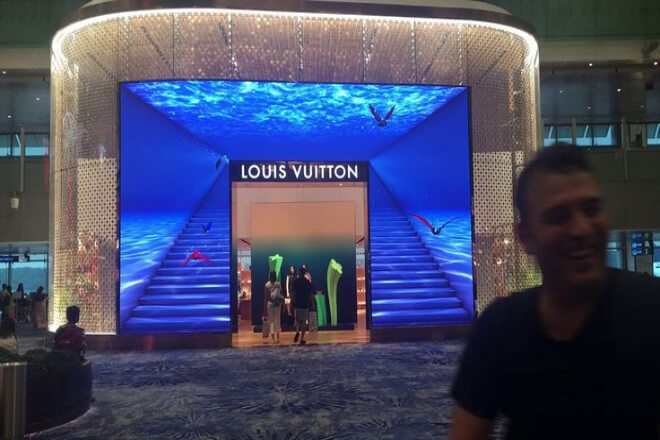
Lors du choix d'un écran LED pour tête de porte, il ne faut pas se demander si le plus grand est le meilleur, ni si le plus complexe est le plus cher.
La clé est de trouver la taille et la configuration « parfaites » qui peuvent mettre en valeur la marque sans causer de problèmes inutiles.
Les suggestions pratiques suivantes vous aideront à comprendre rapidement la clé de la sélection d’écran.
Un moyen rapide de déterminer la taille de l'écran consiste à utiliser un tiers à la moitié de la largeur de la tête de porte comme largeur de l'écran LED.
Par exemple, si la largeur de la tête de porte est de 6 mètres, il est plus approprié de choisir une largeur d'écran comprise entre 2 et 3 mètres.
Ce rapport peut garantir que l'écran et la tête de porte sont coordonnés dans leur ensemble et n'apparaissent ni trop grands ni trop petits.
Parallèlement, tenez compte de l'espacement des points, en tenant compte de la distance de visualisation, pour garantir une présentation claire des détails du contenu. Cela permet d'attirer l'attention sans nuire à l'esthétique générale.
La conception de la porte est souvent un élément important de l’image globale du bâtiment et de la marque.
Lors de la sélection d'un écran, il est préférable de communiquer avec le concepteur à l'avance pour s'assurer que la taille, l'emplacement et le style de l'écran LED sont intégrés à la conception de la porte.
Parfois, le concepteur proposera une solution plus raisonnable en fonction des caractéristiques architecturales.
Comme un affichage segmenté ou la combinaison d'éléments de signalisation traditionnels pour éviter que l'écran ne vole la vedette à la porte et rendre la conception globale plus coordonnée et unifiée.
Le budget détermine le type d’écran que vous pouvez acheter et détermine également l’investissement ultérieur dans la production de contenu.
Lors du choix d'un écran, en plus de la taille, vous devez également prendre en compte des paramètres tels que la résolution, la luminosité et le taux de rafraîchissement pour vous assurer qu'il peut répondre à vos besoins de lecture de contenu.
Ne vous fiez pas uniquement à la taille. Si le contenu n'est pas mis à jour et que la résolution est faible, l'effet sera toujours insatisfaisant.
Une planification budgétaire raisonnable, équilibrant l’investissement matériel et la créativité du contenu, peut maximiser le retour sur investissement.
Étant donné que le contenu peut être mis à niveau ou que des fonctions interactives peuvent être ajoutées à l’avenir, il est préférable de réserver une certaine quantité d’espace d’extension lors de la sélection d’un écran.
Par exemple, réservez des interfaces lors de l’installation et envisagez une conception modulaire pour faciliter le démontage et les mises à niveau ultérieurs.
Cela permet non seulement d’éviter le gaspillage causé par une poursuite aveugle de trop de choses au début, mais aussi de garantir qu’il n’y aura aucune contrainte dans le développement futur et une réponse flexible aux changements.
6. Conclusion
Le choix d'un écran LED pour tête de porte ne se résume pas simplement à « plus c'est grand, mieux c'est », mais nécessite une réflexion approfondie sur l'espace, le contenu, le budget et les besoins réels.
Grâce à l’analyse de cet article, je pense que vous avez une meilleure compréhension de la manière de choisir un écran LED adapté.
N'oubliez pas : le meilleur choix est le meilleur. J'espère que votre magasin attirera davantage de clients et améliorera son image de marque grâce à un écran LED « parfait ».
Enfin, si vous souhaitez en savoir plus sur les écrans LED, merci de nous contacter.
